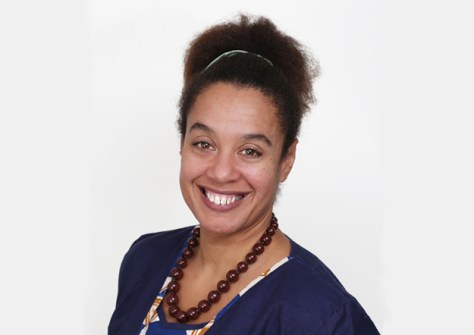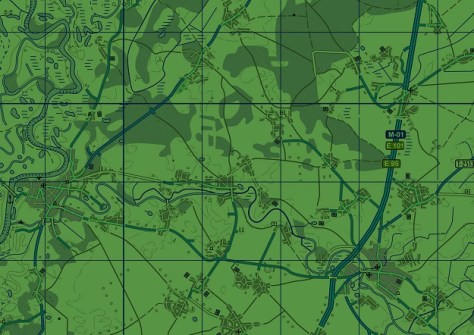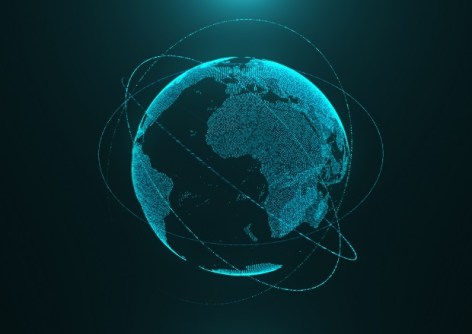
The head of the world’s largest geospatial organisation gives her insights into the challenges and opportunities ahead in 2025.
As President of the International Federation of Surveyors (FIG), Diane Dumashie represents the interests of land and built-environment surveyors and geospatial professionals worldwide. The FIG is a UN-recognised NGO of national member associations, government agencies and ministries, universities and corporates from more than 120 countries.
Dumashie began her career in the corporate sector, rising to the level of property director, before joining an international property advisory consultancy practice. In 1999, she founded an independent practice to support public sector agencies delivering complex land, property and infrastructure regeneration projects with an economic and social development bias.
Internationally, Dumashie helps public sector and multilateral agencies to improve the sustainability of people’s livelihoods. For over a decade she has been an instrumental co-lead in developing and promoting secure land tenure title for women, for which she was honoured with a lifetime achievement award.
“The survey and geospatial sector is exciting because it is at the cutting edge of technological innovation, deeply connected to the people-to-land relationship, and has a significant global impact,” she says.
With the FIG Working Week 2025, a major global event, coming up in Brisbane next year in conjunction with the Geospatial Council of Australia’s Locate25 conference, we spoke with Dumashie to get her perspective on the trends and topics that will shape the geospatial sector worldwide in 2025.
Please describe FIG and its role.
FIG stands as the premier global organisation representing the interests of surveying, land and geospatial professionals across more than 120 countries. Our profession is at the forefront of addressing significant global challenges, such as poverty reduction, rapid urbanisation and the impacts of climate change. These complex global issues present an opportunity for our professionals to be bold and committed to creating impactful knowledge information solutions that empower societies to thrive.
I advocate this because FIG is firmly established itself as an impactful global knowledge network operating across land management and geospatial domains. This network provides a robust platform for rigorous knowledge creation, exchange, and the development of standards and best practices, thereby enhancing professional contributions and services to society.
What opportunities and challenges do you see for sector in 2025?
Opportunities to leverage the sector knowledge are embedded in the FIG four-year work plan that includes a Task Force considering the role of FIG community in the geospatial information ecosystem. This initiative is a significant pillar of our strategic vision to ‘serve society’ by recognising the pivotal role that geospatial data plays as an enabler across all domains of land management. This is in the context of the UN Sustainable Development Agenda as well as international trends and emerging geospatial information ecosystem. In 2025 it will deliver recommendations on how the FIG community may be fit for the future both within the geospatial market and in the wider and emerging digital transformation markets.
Our community of specialists operating across the mapping, land management and geospatial domains is united by our expertise in the measurement, management and analysis of data and, increasingly, geospatial knowledge infrastructure. It is an exciting time, brimming with opportunities.

In this era of digital transformation, data — especially location data — along with allied technologies, is reshaping economies worldwide. Location data is deeply embedded in how people live, work, and play, presenting numerous opportunities for our profession in our subject area domains of land tenure, land value, planning and land development (including minerals).
The strength of our diversity, the depth of our expertise and our collective know-how in the data and geospatial ecosystem add immense value to society. Regardless of our specialisations, the acquisition, analysis, and productive use of data across urban, rural, and natural environments underpin all our activities.
The breadth of innovation and implementation in the digital transformation process is evident across FIG commission activities. For instance, modernising and enhancing land administration and registration to ensure the digitalisation of records and a customer-focused data management entity improves data quality and accessibility for the public. Additionally, the development of digital twins in smart cities relies heavily on effective data management, which our profession is well-equipped to handle.
However, we must manage the challenges carefully. An obvious reason is because of the rapid pace and advancement of digital technologies; this requires effective communication and geo-data management. But the implementation in community may outstrip the development of legal and institutional frameworks. The ecosystem is constantly evolving, and we now must keep pace.
What is your attitude to emerging tech such as AI?
As the lead of FIG, I take a broad strategic approach towards emerging technologies, such as AI and data management; particularly geo-data is a significant focus for us, as is the context of mitigating climate crisis. In the context of FIG vision and mission this is framed by a fundamental question: How do we integrate digital transformation and sustainability for both people and the planet?
Automation is transformative, serving as a tool to enhance our work. But it is crucial to remember that the inherent value of human contribution remains. Transformation, by its nature, is rapid and dynamic. In the realm of AI, the future is already here; witness the rise and adoption of generative AI. The next advancements are swiftly approaching. AI is undeniably a vital part of the near, next and far future, driving connectivity and knowledge dissemination within our community.
However, there is much to navigate as the systems, processes and tools used aren’t without costs. The rapid pace of technological development often surpasses legal and institutional frameworks, raising issues around data ethics, personal privacy, security, poverty and standards.

Our sector must engage in these conversations, as digitalisation in all its forms is a critical infrastructure for governments and people. These are issues that cannot be ducked because connectivity and data is vital.
Within the FIG community, these issues are gaining prominence. We are driving discussions on data transparency in valuation and addressing data poverty and connectivity challenges in rural areas. The progress of spatial data infrastructure and the need for data interoperability are critical topics that cannot be ignored. These are a few examples, but essentially connectivity and data are essential components of the future.
The continuous evolution of AI and tools within the data/geo ecosystem demonstrates extraordinary progress from initial discussions to the present. These advancements highlight the need for software developers, and land and geospatial professionals to collaborate more closely if we wish our sector to be working at its very best. FIG fosters this collaboration through impactful partnerships among our corporate, academic, government agencies and practitioner members.
What excites you about this sector?
There is much to be excited about in our sector. Here are a few highlights:
- Vanguard of digital transformation. Our professional expertise places us at the forefront of geospatial digital transformation. We are not only end users implementing these technologies but also collaborators with software developers, driving innovation in land management.
- People-to-land relationship. Our profession is fundamentally about the relationship between people and land. Digital tools enhance our ability to communicate and understand this relationship through physical representations, enabling better coordination of spatial information. This helps in securing land rights and building better cities, contributing significantly to the global sustainable agenda.
- Impact in the global sustainability agenda. The FIG community is actively involved in supporting the UN Global Geospatial Information Management community of experts, an organisation that helps countries integrate geospatial data into their national plans. Our knowledge and implementation contributions are particularly valued across various geographical regions.
- Attracting new talent. The dynamic nature of digital transformation is a major plus for building expertise in our sector. The range of applications in the geospatial ecosystem not only influences our work but also inspires and attracts younger generations into the industry, such as Gen Z young surveyors. By building upon Gen Z tech-savvy attributes and adaptability to new systems and processes, and working with the experience found in diversity of generations in the workforce, we will capture and ensure that entrepreneurial spirit and innovation are embraced.
- Purpose-driven work. Our profession offers purpose-driven work, which is a hallmark of what we do. The race for talent is a challenge across all professions, but our sector’s ability to offer meaningful and impactful work helps us attract and retain new talent.
In summary, the survey and geospatial sector is exciting because it is at the cutting edge of technological innovation, deeply connected to the people-to-land relationship, and has a significant global impact. It also offers opportunities to attract new talent and provide purpose-driven work, ensuring a vibrant and dynamic future for our profession.
What will you be keeping your eye on in 2025?
Several key areas will be crucial to monitor in 2025:
- Digital transformation and sustainability. Digital transformation has been a major focus, but equally important is how this transformation can support sustainability efforts. The ecosystem is not static; it evolves and branches out, making it essential to anticipate the next steps. We are recognising and upskilling along the value chain of quality data acquisition, analysis and productive use of data for influencing policy decisions.
- Skills development. Developing the necessary skill sets requires a partnership between universities and industry. We must continually ask how to ensure our work remains pivotal in the wider ecosystem. If it isn’t, we need to make it so.
- Reducing data barriers. It’s vital to address data barriers, particularly those affecting data security for women and girls. Finding ways to reduce these barriers will be a key focus.
- Engaging the youth. We need to prove to younger generations that mapping and geospatial work are exciting fields. Utilising the power of visualisation can help make this case.
What are FIG’s plans or priorities for 2025?
FIG thrives as a knowledge creation network, driven by innovation, sharing and advancing the goalposts. We achieve this collectively with a vision with purpose and diversity in our approaches due to our broad-based membership.

Our profession’s contribution to tackling global challenges is significant. We are committed to empowering the survey and geospatial community to make a meaningful impact.
In 2025, FIG will host its annual global conference in Brisbane from 6 to 10 April, co-organised with the Geospatial Council of Australia’s Locate25 conference. This event will highlight the work of professionals in our sector and showcase our corporate partners’ hardware and software. It will be a platform for private, corporate, public and academic networks to discuss the themes mentioned above. We warmly invite you to attend and submit a paper.







